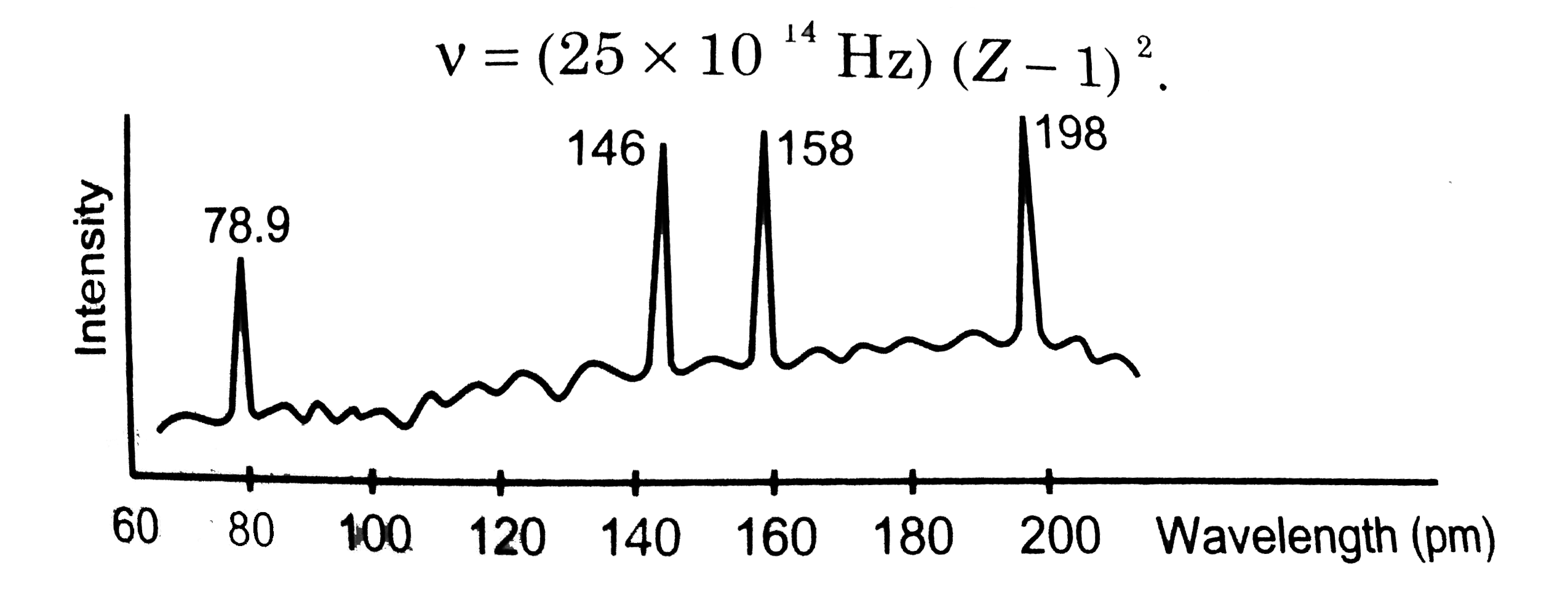Exercise from HC VERMA X-Rays for Class 12
| Class 12 | PHYSICS |
| Chapter | X-Rays |
| HC VERMA | Exercise |
| Medium | English |
| Academic Year | 2023-2024 |
Question 21
Find the maximum potential difference which may be applied across an X-ray tube with tungsten target without emitting any characteristics K or L X-ray. The energy levels of the tungsten atom with an electron knocked out are as follows.
Cell containing vacancy K L M
Energy in keV 69.5 11.3 2.3View SolutionQuestion 22
The electric current in an X-ray tube (from the target to the filament) operating at 40kVis 10mA. Assume that on an average, 1% of the total kinetic energy of the electrons hitting the target are converted into X-rays and (b) how much heat is produced in the target every second?View SolutionQuestion 24
Continuous X-rays are made to strike a tissue paper soaked with polluted water. The incoming X-rays excite the atoms of the sample by knocking out the electrons form the inner shells. Characteristic X-rays are subsequently emitted. The emitted X-rays are analysed and the intensity is plotted against the wavelength (figure 44*E1). Assuming that only Kα intensities are detected, list the elements present in the sample from the plot. Use Moseley's equation. v=(25×1014Hz)(Z−1)2.
 View Solution
View SolutionQuestion 26
The stopping potential in a photoelectric experiment is linearly related to the inverse of the wavelength (1λ) of the light falling on the cathode. The potential difference applied across an X-ray tube is linearly related to the inverse of the cutoff wavelength (1λ) of the X-ray emitted. Show that the slopes of the lines in the two cases are equal and find its value.View SolutionQuestion 27
Suppose a monochromatic X-ray beam of wavelength 100 pm is sent through a Young's double slit and the interference pattern is observed on a photographic plate placed 40 cm away from the slit. What should be the separation between the slits so that the successive maxima on the screen are separated by a distance of 0.1 mm?View Solution
All Exercises from HC VERMA Class 12 PHYSICS X-Rays
- EXERCISES
- EXERCISES
- EXERCISE
- EXERCISES
- EXERCISES
- EXERCISE
- EXERCISES
- EXERCISES
- EXERCISE
- OBJECTIVE 1
- OBJECTIVE 1
- OBJECTIVE 1
- OBJECTIVE 1
- OBJECTIVE 1
- OBJECTIVE 1
- OBJECTIVE 1
- OBJECTIVE 1
- OBJECTIVE 1
- OBJECTIVE 2
- OBJECTIVE 2
- OBJECTIVE 2
- OBJECTIVE 2
- OBJECTIVE 2
- OBJECTIVE 2
- OBJECTIVE 2
- OBJECTIVE 2
- OBJECTIVE 2
- SHORT ANSWER
- SHORT ANSWER
- QUES FOR SHORT ANS
- SHORT ANSWER
- SHORT ANSWER
- QUES FOR SHORT ANS
- SHORT ANSWER
- SHORT ANSWER
- QUES FOR SHORT ANS
- WORKED OUT EXAMPLES
- WORKED OUT EXAMPLES
- WORK OUT EXAMPLE
- WORKED OUT EXAMPLES
- WORKED OUT EXAMPLES
- WORK OUT EXAMPLE
- WORKED OUT EXAMPLES
- WORKED OUT EXAMPLES
- WORK OUT EXAMPLE
